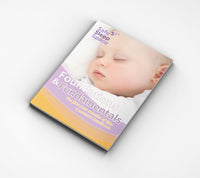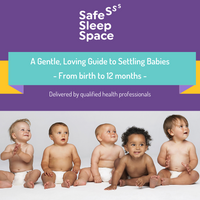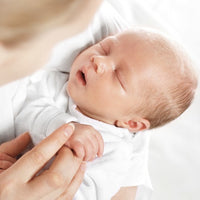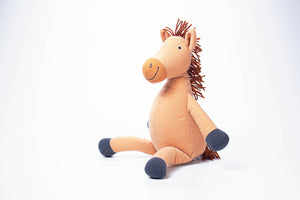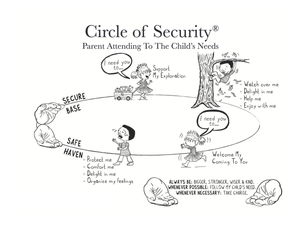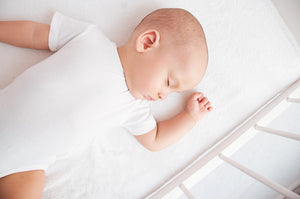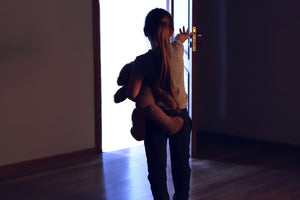Amber beads. Why they're really not a good idea.....

In recent years, there’s been a swell of interest in using amber bead jewellery for babies and young children. Parents, who use amber beads, believe that amber has therapeutic qualities when in contact with their child’s skin, particularly for alleviating teething symptoms. But what is the evidence of this and the associated risks?
Amber has always been a popular choice for adults, who can find the yellowy brown hue very attractive. Amber’s popularity no longer stops with the grown-ups, and it’s becoming more common to see babies and toddlers wearing some form of amber jewellery as well.
Historically, amulets and jewellery have been used in many cultures, believing they help to protect children from harm. Some parents also think that wearing amber jewellery helps to boost the emotional connection between themselves and their baby. The warm yellowish glow of the resin is thought to emit a positive energy, which envelops the child in a soothing and enticing way. Some parents even buy amber bead jewellery to wear themselves to match their child’s.
Parents, who use amber beads, believe that amber has therapeutic qualities when in contact with their child’s skin, particularly for alleviating teething symptoms. Amber contains succinic acid and it is this which is thought to act as an anti-inflammatory, providing teething relief. Reports of babies/children seeming less miserable, and showing fewer teething symptoms, are common for parents who are keen to do what they can to alleviate common signs of teething.
What is Amber anyway?
Amber is a naturally occurring mineral and is essentially fossilised tree resin, or sap. Sap leeches out of the tree when there has been a breakdown in the protective nature of the bark. All trees produce sap, and some leak sap more easily than others. When sap hardens, it creates resin, which, if left undisturbed, sits on the surface of the tree until it’s as hard as rock. Amber bead products are made from polished chips of this resin after it’s been collected.
Chunks of the resin are then shaped and smoothed and holes are drilled into each chip. Then, depending on the length of the necklace/bracelet or anklet, cord is threaded through each hole and a knot placed between each bead. Amber comes in a range of colours, from very pale yellow through to beige and dark brown. Reportedly, the darker the amber, the more therapeutic its properties. And depending on where the amber is sourced, manufactures claim it may be of lesser of greater quality. Some manufacturers state that amber which is sourced from the Baltic region, is a superior quality and therefore they charge a higher price for it than the paler hues.
So, what’s the truth about Amber?
There’s an old saying that when something sounds too good to be true, it probably is. And when it comes to amber bead necklaces, bracelets, anklets or any other form of jewellery, then the claims are most certainly invalid and in fact, using them can actually cause a child harm.
What does the science say?
There is no scientific proof that wearing amber jewellery makes any difference to teething symptoms. Despite what the manufacturers say, there is simply no evidence to support advertising claims about amber’s therapeutic properties.
Amber needs to be heated to 200 degrees Celsius before any volatiles are released. Given that the average body temperature for a small child is around 36-37 degrees, it’s unlikely there’s going to be any substance coming out of the amber. And if it was, the amount and concentration would be variable, making its use even riskier.
The evidence is clear, that there is no evidence around the benefits of using amber beads for children. In trials, they are no better than placebos and provide no therapeutic results.
What’s the risk with Amber Bead jewellery?
- They are a choking hazard if a piece of amber comes apart from the cord or breaks off. Though most have knots between each bead, they can still separate.
- Amber bead necklaces can, and have, caused strangulation and death in babies and young children.
- A child’s symptoms may be due to another cause than teething, such as illness, which warrants a medical check.
- Injury to the mouth.
- Infection.
- They can cause interruption to blood flow if they become tight and restricting. Some parents claim to place amber bead jewellery against their child’s skin, rather than attach it to their child. This does not reduce the risk of choking and in fact, poses additional safety risks.
Help with looking after your baby
Learn what makes a toddler tick and discover new ways of supporting their growth and development with the Nourish Baby Guide to Toddlers 1-3 years.
Many parents have reduced sleep when a new baby arrives. The Safe Sleep Space website has a variety of resources and supports to provide tips and advice on how to assist your baby with sleep. You can also book a phone consultation to speak with a Sleep Consultant.
Other blog posts you will find helpful:
When is it time to get help for my child's sleeping?
Why is infant mental health so important when it comes to sleep?
Looking after the wellbeing of Dads.
How to help stop a toddler's bottles
More information
Safe Sleep Space
Download your FREE Infant Sleep Music
Jane Barry is a Midwife and Child Health Nurse.
